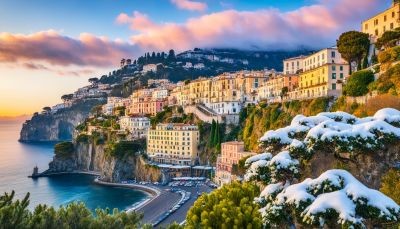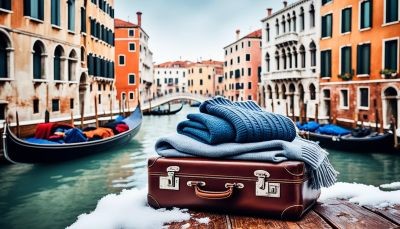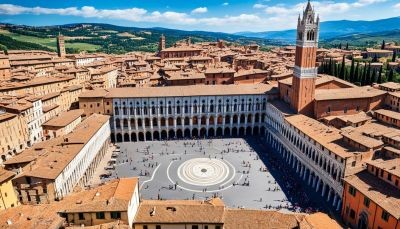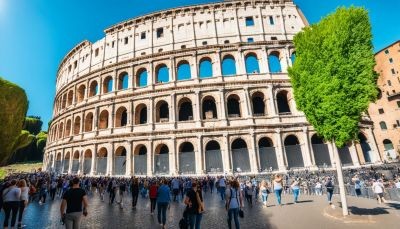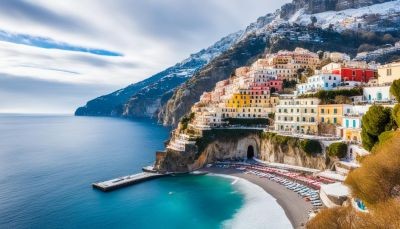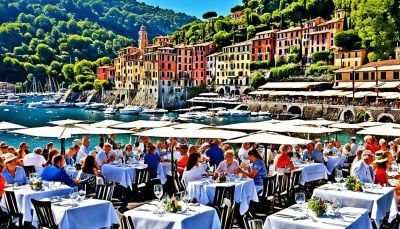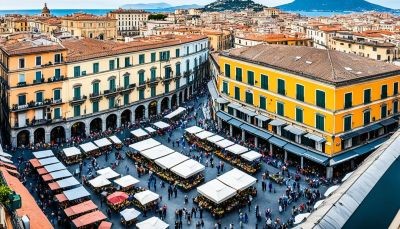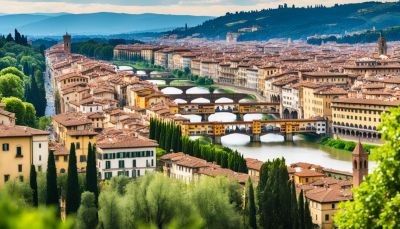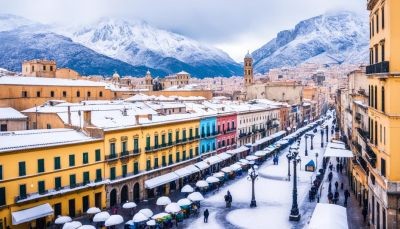Imagine a place where the sun always shines, the beaches are perfect, and the skies are clear. That's Los Cabos, Mexico for you. But, when should you book your trip for the best weather in this beautiful part of the Baja California peninsula?
On the southern tip of Baja California, Los Cabos greets visitors with stunning beaches and impressive rock formations. It has mainly pleasant, sunny, and warm weather all year. November to May are the best months to visit. The weather is almost perfect, and there are fewer tourists. Yet, every season in Los Cabos offers something special. This guide will help you plan your trip around the weather.
Key Takeaways
- Los Cabos enjoys a warm and dry climate throughout the year, making it an ideal destination for weather-savvy travelers.
- The best times to visit Los Cabos are the months of November and May, when you'll find nearly perfect weather conditions and fewer crowds.
- Each season in Los Cabos has its own unique draws, from whale watching opportunities to cultural festivals.
- Visitors should be aware of the potential for tropical storms and hurricanes during the rainy season from July to October.
- By understanding the region's weather patterns and planning your trip accordingly, you can ensure a truly memorable and weather-optimal vacation in Los Cabos.
Understanding Los Cabos Weather Patterns
Los Cabos is at Mexico's Baja California peninsula's southern tip. It has warm, dry weather all year. The temperature here is usually in the 60s (16-20°C) in winter and can go up to the 80s (31-35°C) in summer. This makes the Los Cabos climate perfect for any visit.Warm and Dry: Los Cabos' Typical Climate
The seasons in Los Cabos are warm, sunny, and dry. It hardly ever rains, except for a short time in summer. This lack of rain makes Los Cabos great for a sunny holiday any time.Rainy Season and Hurricane Risks
From July to October is the rainy season Cabo, with September getting the most rain. September sees about 4.6 inches (117 mm) of rain. This is also Mexico's hurricane season Cabo.Bays and mountains help shield Los Cabos from severe storms. Yet, visitors should keep an eye on the weather for their trip.
Peak Season: December to April
The best time to visit Los Cabos is between December and April. During this time, the weather is warm and sunny. Temperatures range from the 60s to the 80s Fahrenheit. This is perfect for whale watching as humpback whales come to the area. They are there from December to March. You can see them breaching and playing in the Sea of Cortez.This period is also the ideal time for enjoying the beaches and outdoor activities in Los Cabos.
Whale Watching Opportunities
From December through March, visitors can see humpback whales in Los Cabos. These majestic animals play in the warm-weather travel destination. It's a great time to witness these marine mammals in the wild. The sunny Cabo days and ideal Cabo temperatures offer a perfect setting for this experience.Comfortable Temperatures
Winter in Los Cabos is warm and sunny. The average temperature is from the 60s to the 80s Fahrenheit. It's perfect for Mexico beach vacations and outdoor fun. This time avoids the hot and humid summer weather.Spring: March to May
In Cabo San Lucas and Los Cabos, spring is a great time to visit. Best time to visit Cabo starts from March. The weather warms up, and you'll find highs around 80°F. As it moves into May, temperatures can go as high as the upper 80s. This is perfect for enjoying Baja California Sur seasons and warm-weather travel on the Mexican coast.Rising Temperatures and Calm Waters
Spring in Los Cabos means warmer days and cool, clear waters. This time is perfect for water activities. The Sea of Cortez and the Pacific Ocean are inviting for swimming and snorkeling.Spring Break Crowds
During spring break, Cabo San Lucas can get busy. This happens when Mexican families travel during Easter. Also, many college students come for spring break Cabo. If you want somewhere quieter, consider San Jose del Cabo. It's more peaceful during this season.Summer: June to August
Summers in Los Cabos are hot and humid, with high averages around 90°F (32°C). During this season, there's a higher chance of tropical storms and hurricanes. However, the region’s bay and nearby mountains provide some defense against these weather patterns.Sea Turtle Nesting Season
In the warmer summer, it's a special time for sea turtles in Los Cabos. Thousands of Olive Ridley sea turtles come ashore to lay their eggs. This is a great chance for visitors to see these amazing creatures up close.Lower Hotel Rates
Hotel rooms are easier to find in the summer, with more vacancies. This usually means you can find better deals. It's a perfect chance to enjoy Los Cabos' beautiful beaches, top-notch resorts, and lively atmosphere.Los Cabos, Mexico: Best Months for a Weather-Savvy Trip
Fall: September to November
In Los Cabos, the best weather for a savvy trip falls between November and May. The region sees less rain and cooler weather as fall sets in from September to November. September starts out with about 4.37 inches of rain but quickly dries up. By November, the region has less humidity and more comfortable temperatures. This change makes it a great time for outdoor adventures and sightseeing.Decreasing Rainfall and Temperatures
Fall in Cabo San Lucas and Los Cabos is a welcome change from the summer's heat and humidity. The Baja California Sur region's weather is ideal during this time. Both temperatures and prices drop, making it the best time to visit Cabo. Those visiting can enjoy the beaches and activities without the usual crowds and high costs of winter and spring breaks.Winter: December to February
In Los Cabos, the winter lasts from December to February. It's the coolest time of the year. Days see highs in the 60s Fahrenheit and nights in the low 60s. Despite being cooler, Los Cabos weather is sunny and mild. This makes it perfect for beach lovers and outdoor activities. Visitors should bring a light jacket or sweater for the chilly nights.This season welcomes many escaping from cold winters. They seek Los Cabos' warm-weather travel and sunny Cabo days. The pleasant temperatures of winter in Cabo are great for exploring. It's not too hot for long hikes, yet still sunny for beach days.
Monthly Temperature and Rainfall Data
Los Cabos has a warm and dry Cabo San Lucas climate year-round. In January, the temperature drops to 64°F (18°C). But by July and August, it's up to 85°F (29°C). The most rain falls in summer and early fall, with September being the wettest month. It gets about 4.37 inches (111 mm) of rain then. March to May sees almost no rain, making spring quite dry.These facts show that Los Cabos offers warm, sunny weather all year. This makes it a great destination no matter the season.
| Month | Average High (°F) | Average Low (°F) | Average Rainfall (inches) |
|---|---|---|---|
| January | 73 | 64 | 1.14 |
| February | 75 | 65 | 0.79 |
| March | 78 | 67 | 0.31 |
| April | 82 | 70 | 0.12 |
| May | 84 | 73 | 0.08 |
| June | 87 | 77 | 0.47 |
| July | 89 | 79 | 2.17 |
| August | 89 | 79 | 3.43 |
| September | 87 | 78 | 4.37 |
| October | 85 | 75 | 2.36 |
| November | 80 | 70 | 0.71 |
| December | 75 | 65 | 1.12 |
Popular Events and Festivals
Los Cabos is a hot spot for many events that people love. These events draw folks from near and far. For the spring break, college students love the fun vibe, especially in Cabo San Lucas.Fishing Tournaments
The area is also famous for top-notch fishing. Each October, it hosts the Bisbee's Fishing Tournament. This event is one of the most lucrative worldwide.Cultural Celebrations
Los Cabos shows off its deep cultural heritage with various festivals. The Todos Santos Arts Festival, Todos Santos Cinema Festival, and Festival Sabores de Baja offer a taste of the art, movies, and food.| Event | Description | Timing |
|---|---|---|
| Spring Break Festivities | Lively party atmosphere, particularly in Cabo San Lucas, attracting college students | March-April |
| Bisbee's Fishing Tournament | One of the richest fishing tournaments in the world, showcasing the region's world-class angling | October |
| Todos Santos Arts Festival | Celebrating the local art and cultural heritage of the Baja California Sur region | Varies, typically in the fall |
| Todos Santos Cinema Festival | Showcasing the best in local and international film, highlighting the region's cinematic talent | Varies, typically in the spring |
| Festival Sabores de Baja | A celebration of the diverse cuisine and flavors of the Baja California Sur region | Varies, typically in the summer |
Conclusion
Los Cabos, Mexico shines as a top pick for beach lovers. It welcomes travelers all year with warm sun and beautiful scenes. The best months to pack your bags and visit are from November to May. This time offers lovely weather, less rain, and fewer people than the busy winter and spring season.There's plenty to do in Los Cabos. You can watch whales, enjoy the beach, or dive into local culture any time of year. Knowing the unique weather of Cabo San Lucas and Los Cabos makes your trip planning easier. This way, you can have an amazing vacation in this beautiful part of Baja California Sur.
If you dream of a perfect time to visit Cabo, think about November or May. These months offer great weather and the chance to experience this amazing Mexican spot to the fullest.
FAQ
What are the best months to visit Los Cabos for a weather-savvy trip?
The perfect times to visit Los Cabos are November and May. During these months, you'll enjoy great weather and less busy times than the rest of the year.
What is the typical climate and weather in Los Cabos?
Los Cabos usually has a warm and dry weather. Temperatures can vary from the 60s Fahrenheit in the cooler months to the upper 80s in the hot ones. The rainy season is from July to October, with September being the wettest month.
When is the peak tourist season in Los Cabos?
The peak time for tourists in Los Cabos is December through April. The weather stays warm and sunny, perfect for temperatures from the 60s to 80s. This season is excellent for seeing whales.
What is the weather like in Los Cabos during the spring months?
Spring in Los Cabos means it's getting hotter and the waters are calm. Highs can reach 80°F in March and up to the 80s by May. But, lots of people visit during spring break, especially in Cabo San Lucas.
What is the weather like in Los Cabos during the summer months?
In the summer, Los Cabos can be hot and humid, with highs near 90°F. This is also when tropical storms might happen. Fortunately, the bay and mountains nearby help protect the area.
What is the weather like in Los Cabos during the fall months?
Fall from September to November brings less rain and cooler weather to Los Cabos. By November, highs are in the upper 70s, creating a nice, dry season.
What is the weather like in Los Cabos during the winter months?
Winters in Los Cabos are the coolest but still sunny and mild, making it perfect for beach lovers. Highs are in the 60s with lows in the low 60s. This is a great time for outdoor fun and to enjoy top resorts.
What are the average monthly temperatures and rainfall in Los Cabos?
The weather in Los Cabos is mostly warm and dry. Monthly temperatures vary from 64°F in January to 85°F in July and August. Rainfall peaks in summer and early fall, with September as the wettest month.
What are some of the popular events and festivals in Los Cabos?
Los Cabos is known for many events and festivals. These include spring break, the Bisbee's Fishing Tournament, the Todos Santos Arts Festival, the Todos Santos Cinema Festival, and the Festival Sabores de Baja.


